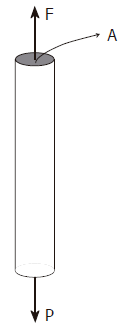Mechanical behavior of colonic anastomosis in experimental settings as a measure of wound repair and tissue integrity
- PMID: 17007020
- PMCID: PMC4088168
- DOI: 10.3748/wjg.v12.i35.5668
Mechanical behavior of colonic anastomosis in experimental settings as a measure of wound repair and tissue integrity
Abstract
Aim: To determine the mechanical properties of anastomotic colonic tissue in experimental settings and therefore give a measure of wound healing.
Methods: Thirty-six male Wistar rats were used as experimental models of anastomotic tissue integrity. On the 5th post-operative day, the tensile strength was measured by application of an axial force, providing a quantitative measure of anastomotic dehiscence and leakage.
Results: Diagrams of the load as a function of the time [P = P (t)] and of the displacement also as a function of time [Delta s = Delta s (t)] were recorded for each test, permitting the design of the load versus the displacement diagram and thus providing significant data about the critical values of anastomotic failure. Quantitative data were obtained concerning the anastomotic strength of both control specimens (healthy rats), as well as specimens from non-healthy rats for comparison.
Conclusion: This experimental model provides an excellent method of measuring anastomotic strength. Despite the relative small number of specimens used, this method provides an accurate way of measuring wound repair. More experimental measurements need to be performed to correlate emerging tensile strength values to anastomotic failure.
Figures




Similar articles
-
The role of dura mater and free peritoneal graft in the reinforcement of colon anastomosis.J Invest Surg. 2007 Jan-Feb;20(1):15-21. doi: 10.1080/08941930601126108. J Invest Surg. 2007. PMID: 17365403
-
Anastomotic healing in the rat colon: comparison between a radiological method, breaking strength and bursting pressure.Int J Colorectal Dis. 2002 Nov;17(6):420-5. doi: 10.1007/s00384-002-0392-9. Epub 2002 Apr 16. Int J Colorectal Dis. 2002. PMID: 12355219
-
Bursting pressure in anastomotic healing in experimentally induced colitis in rats.Dis Colon Rectum. 1998 Apr;41(4):468-72. doi: 10.1007/BF02235761. Dis Colon Rectum. 1998. PMID: 9559632
-
Healing of experimental colon anastomosis.Eur J Surg Suppl. 1991;(566):1-51. Eur J Surg Suppl. 1991. PMID: 1725603 Review.
-
Healing of experimental intestinal anastomoses. Parameters for repair.Dis Colon Rectum. 1990 Oct;33(10):891-901. doi: 10.1007/BF02051930. Dis Colon Rectum. 1990. PMID: 2209281 Review.
Cited by
-
Effects of albumin/glutaraldehyde glue on healing of colonic anastomosis in rats.World J Gastroenterol. 2017 Aug 21;23(31):5680-5691. doi: 10.3748/wjg.v23.i31.5680. World J Gastroenterol. 2017. PMID: 28883693 Free PMC article.
-
Healing of colonic anastomosis in rats under obstructive ileus conditions.Discoveries (Craiova). 2020 Jun 30;9(2):e129. doi: 10.15190/d.2021.8. eCollection 2021 Apr-Jun. Discoveries (Craiova). 2020. PMID: 34849396 Free PMC article.
-
Preoperative vitamin C supplementation improves colorectal anastomotic healing and biochemical parameters in malnourished rats.Int J Colorectal Dis. 2016 Nov;31(11):1759-1766. doi: 10.1007/s00384-016-2647-x. Epub 2016 Sep 10. Int J Colorectal Dis. 2016. PMID: 27614446
References
-
- Zografos GC, Simeonidis KM, Parasi AS, Messaris EG, Menenakos EE, Dontas IA, Marti KC, Androulakis GA. Adhesion formation: intraperitoneal catheters in surgical practice. J Invest Surg. 2002;15:37–43. - PubMed
-
- Hendriks T, Mastboom WJ. Healing of experimental intestinal anastomoses. Parameters for repair. Dis Colon Rectum. 1990;33:891–901. - PubMed
-
- Ikeuchi D, Onodera H, Aung T, Kan S, Kawamoto K, Imamura M, Maetani S. Correlation of tensile strength with bursting pressure in the evaluation of intestinal anastomosis. Dig Surg. 1999;16:478–485. - PubMed
-
- Koruda MJ, Rolandelli RH. Experimental studies on the healing of colonic anastomoses. J Surg Res. 1990;48:504–515. - PubMed
MeSH terms
LinkOut - more resources
Full Text Sources

